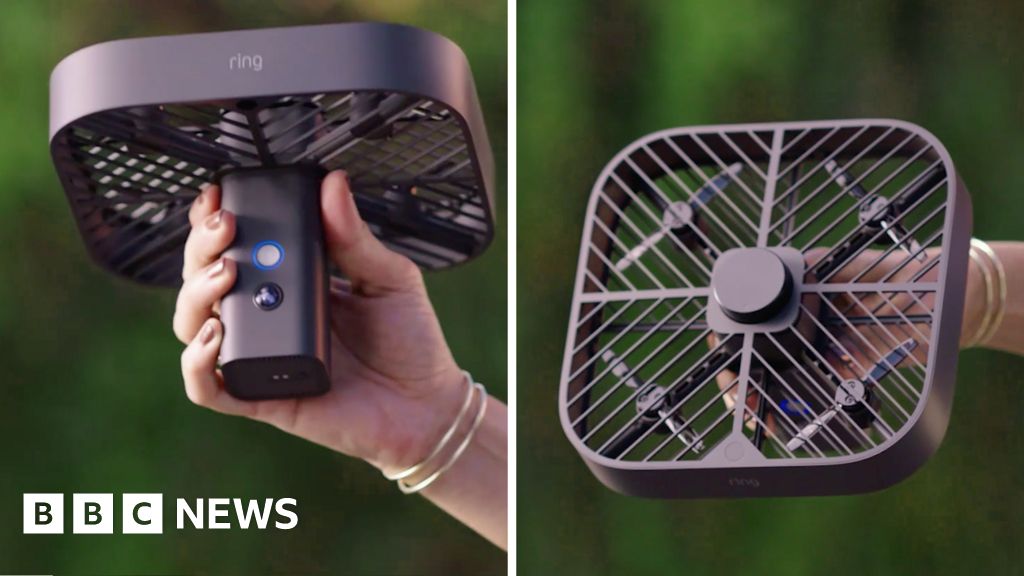By Leo Kelion
Technology desk editor
Published47 seconds ago
image copyrightApple
Apple has unveiled a new personalised workout subscription service alongside new smartwatches and tablet computers.
Fitness+ collects health data gathered by an Apple Watch and then displays it alongside workout videos shown on a larger display.
The platform will compete with existing fitness apps on iOS from Peloton, Les Mills and Fiit.
It also poses a challenge to Fitbit, whose wearables benefit from their own health-coaching subscription service.
As many had forecast, Apple decided to hold back details of its next iPhones for a separate event.
Yoga and dance
Like some of its rivals, Fitness+ also allows competitive users to see how their own efforts compare with others who have completed the same fitness routine previously.
"Health-tracking continues to be a major focus for Apple, and its new Fitness+ service signals its intent to generate more revenue from its products in this area," commented Leo Gebbie from the consultancy CCS Insight.
Fitness+ will initially launch in six countries including the US and UK before the end of 2020.
It will cost £10 per month or £80 per year as a standalone service, which can be shared among members of the same family.
image copyrightApple
image captionFitness+ features cycling, dance, treadmill and yoga routines among othersAlternatively, it can be purchased alongside other Apple services - including iCloud storage, Arcade video games and Apple Music - for about £30 per month - as part of the top tier of a bundle of services called Apple One.
Other mixes of services can be subscribed to for lower fees.
"Support for 10 different workouts with and without equipment, and the fact it is being sold at a family price will make Fitness+ very attractive," said Carolina Milanesi from the Silicon Valley-based consultancy Creative Strategies.
"And I don't think bundling it with the other services is anti-competitive, as you are seeing other services do the same thing - for example Disney's Hulu TV service in the US with Spotify."
image copyrightApple
image captionChief executive Tim Cook introduced the virtual event from Apple's headquarters in CaliforniaOxygen saturation
Apple unveiled two new ranges of smartwatches: the high-end Series 6 Watch and lower-priced Watch SE.
The Series 6 introduces a blood-oxygen sensor to help manage conditions that affect the heart and lungs.
It measures SpO2 levels, which indicate how much oxygen is being carried by the user's red blood cells from the lungs to other parts of their body.
Apple suggested this could potentially act as means to detect the early onset of respiratory problems, although its small print says the feature is "not intended for medical use".
Samsung, Huawei and Fitbit already sell smartwatches that provide the same facility. However, their ability to offer it has depended on the approval of local health regulators.
The SE model lacks the new sensor and uses a slower processor, but otherwise offers most of the features found in the more expensive model.
image copyrightAPple
These include sleep-tracking and a new facility targeted at children called Family Set-up. It can be set to trigger automatic location notifications to a child's parents when the wearer visits familiar places like their grandparents or school.
It also makes it possible to assign a unique phone number to a Watch, rather than using one that already belongs to an iPhone.
"A logical use would be for a parent to give a child a cellular-enabled Apple Watch so they can remain in contact," commented Mr Gebbie.
"We expect to see hand-me-down Watches used in this scenario, rather than a device bought specifically for this purpose."
The Series 6 range starts at £379 and SE at £269.
A14 chip
Apple's new iPad Air is the first product from the firm to be based on a new chip-manufacturing process that promises more processing power and better energy efficiency thanks to the fact that transistors can be packed together more densely than before.
Apple typically launches its new chips inside its iPhone before its iPads, but this year the release of its new handsets have been delayed by the Covid-19 pandemic.
The company suggested the A14 processor would make it easier to edit 4K videos and do motion-tracking of real-world objects for augmented reality apps.
The machine has a fingerprint sensor built into one of its side buttons to reduce the size of the bezels, and also introduces a USB-C port, which until now had been limited to the more costly iPad Pro range.
The new iPad Air also has a slightly larger screen than before - 10.9in (27.7cm) - but it costs £100 more, starting at £579.
The firm also unveiled a new lower-priced basic iPad that uses the older A12 chip.
Demand for tablets across the wider tech industry has risen since the start of the coronavirus pandemic as consumers increasingly used them for entertainment, home schooling and remote working.
Shipments in the April-to-July quarter were up 19% on the same period in 2019, according to research firm IDC, with Samsung, Amazon and Huawei among those making even bigger gains.
According to IDC's figures, Apple's iPads remain the market leader, but only saw a 2% annual gain.
"Apple kept its volume but its rivals made strides via the opportunistic sale of cheaper devices," commented IDC's Marta Pinto.

 5 years ago
1075
5 years ago
1075 

